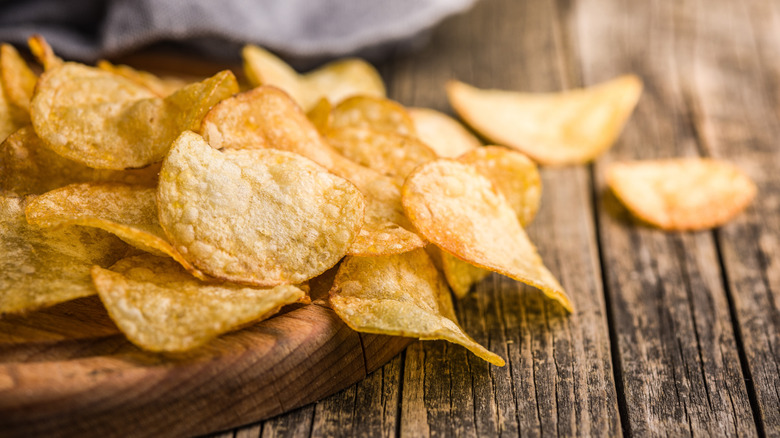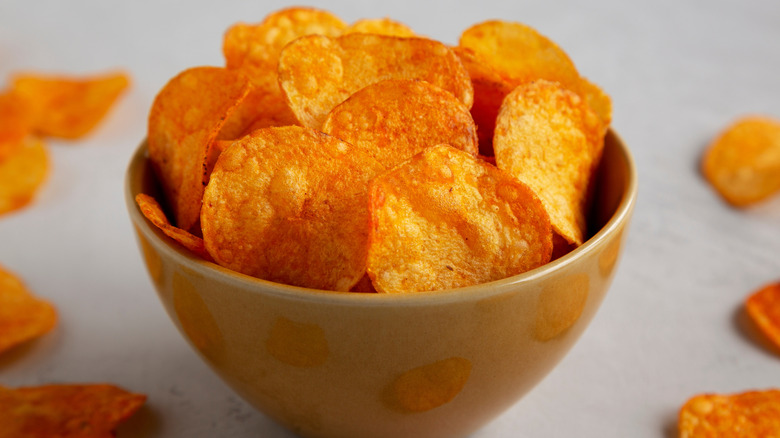The One Rule To Remember When Making Homemade Potato Chips
Making homemade potato chips is an ideal way to use your time when you crave a crunchy snack. However, to maximize your chances of achieving that perfect taste, there's a very simple rule you must follow: Be sure to season the chips while they are still wet from the fryer.
When your chips are still covered in plenty of hot, wet oil, your seasoning has a much better chance of adhering to them. As the chips drain, the oil leaves behind a tiny bit of residue that helps glue flakes of salt, pepper, or whatever else you add to the surface. Whether they are flat as a board or even extra-crispy potato sticks, you will need to use every trick up your sleeve to ensure every millimeter of surface area gets an even coating of flavor. This is especially important if you use large flake salt or other coarsely ground seasonings, as these are more likely to fall off.
Of course, the best homemade potato chip recipes use finely ground seasoning. Not only do they stick better to a chip fresh from the fryer, but they also help achieve a more even coating on each side. If you try to season dry chips with coarse ingredients, you will have quite a difficult time getting anything to stick without an extra coating of wet ingredients, such as vinegar. Once you have decided on the flavor profile you want your chips to have, it's time to consider their texture.
How to get crispy vs crunchy homemade potato chips
Since you are making your own homemade potato chips, texturize them according to your preferences. There is no difference in difficulty when making crispy or crunchy chips, but you will need to plan in advance what kind of texture you're aiming for.
Crispy chips are thinly cut and fried at higher temperatures. At consistently high temperatures close to 350 degrees Fahrenheit, the potatoes' starch granules have a very limited window to absorb moisture, expand, and settle into a firm matrix. A thin texture may cause the slices to puff up, but it's the high oil temperature that makes them so shatteringly crisp. After only a few minutes, you will be left with golden brown flakes ripe for seasoning.
Crunchy chips, however, are about 50% thicker than crispy chips and fried at lower oil temperatures for longer periods of time. Over 13 minutes at 300 degrees Fahrenheit, the potato's starches swell with moisture and form an orderly, rigid matrix, making them more durable and giving them a satisfying crunch. While you will still need to be a bit careful with these, crunchier chips are easy to flavor as you can flip them, toss them in a bowl or bag, or even just shake them up by hand when seasoning. Crunchy chips are so durable that you can even roast them in the oven for a little extra flavor. This trick works for store-bought potato chips, too.
Static Media owns and operates Daily Meal and Food Republic.


